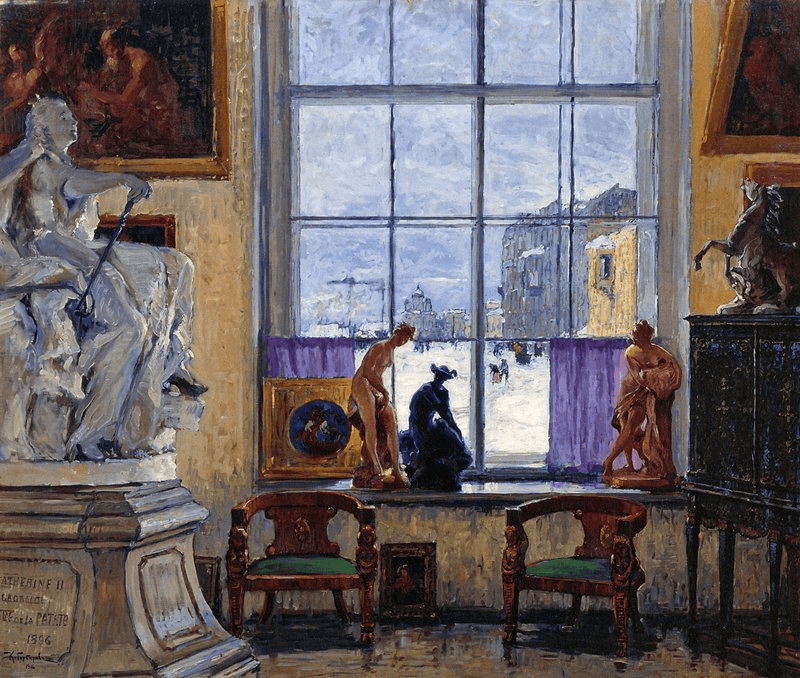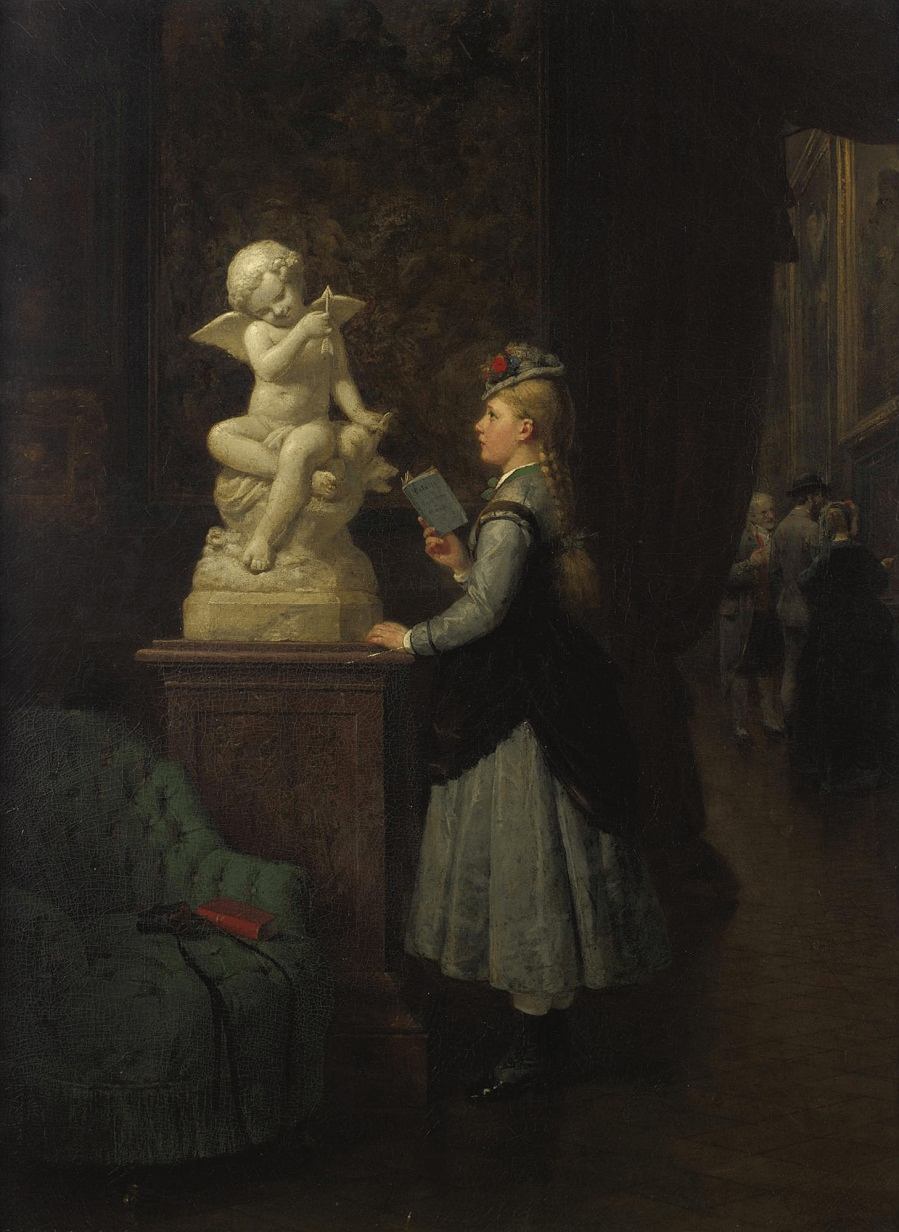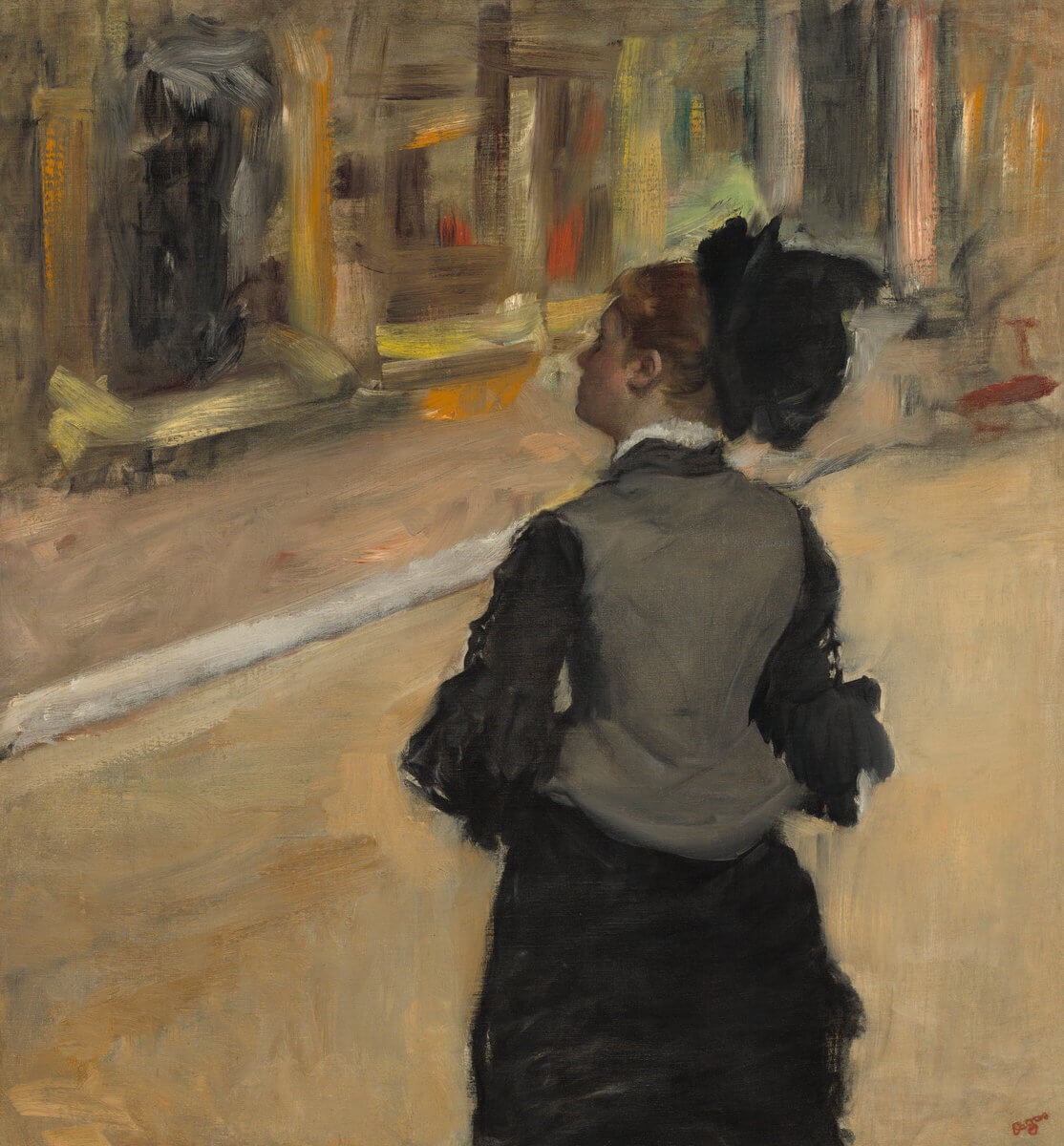Cover image: Edgar Degas, A Visit to the Museum (Woman Viewed from Behind), c. 1879–1885. Courtesy National Gallery of Art, Washington D.C.
This post was inspired by a conversation with a cousin who expressed frustration about feeling that she doesn’t know how to approach art museums. She said that she walks around museums and causally admires works that catch her attention, but she doesn’t know what to look for or what makes a work important. She said that she particularly struggles with permanent collection exhibitions, which don’t necessarily have strong themes or abundant explanatory texts. I’m sure she’s not the only person to struggle with this.
Expert guidance for your next art museum adventure

Before we start, I want to emphasize that there’s nothing wrong with approaching museums the way she currently does. Walking around and admiring the works that catch your attention is a totally valid way to enjoy an art museum. Don’t feel that there’s something wrong with this approach if it’s fulfilling to you. But if you want to get more out of your experience, I have some suggestions for you.

Before You Visit, Do Some Research
My first suggestion is to do some brief research online before you visit. Most museum websites have some kind of collection highlights page, usually under the “Collections” or “Art” tab. This page will let you know what the museum considers to be its most significant pieces, and though I don’t suggest limiting yourself to only seeing these select works, it’s worth taking a look at. The point of this idea isn’t to check famous artworks off a “seen it” list; it’s to familiarize you with some of what you’ll see, so you feel more at home. Museum websites should give also you an idea about what areas of art the museum focuses on or is best known for. If you can’t find out online, ask a guard or desk attendant when you get there. Even if the museum’s strongest area isn’t your favorite, it’s almost always rewarding to explore, because these areas are often the best curated and provide the most information.
Join a Tour, or Pick Up an Audio Guide
If learning about the art is a priority for you, an audio guide or guided tour could be your best friend. They will help you in two ways – by giving you information, interpretation, and context for the works you see, and by highlighting a selection of works to focus on. Audio tours – many are now available through the free Bloomberg Connects app – are usually informative and well put-together, and they allow you to move at your own pace. However, you might not want to be glued to an audio device for your whole visit, and it will discourage interaction if you’ve come with family/friends/a date. Guided tours are more variable depending on the guide you get, but the best can be excellent! Guided tours allow you to ask questions and interact with other people. Many museums offer tours of collection highlights one or more times per day, and they are often included in your admission price. You might want to check the website in advance to make sure you’re in the right place at the right time to catch one.

Bring a Buddy
I generally prefer to visit museums by myself so I can do my own thing. But I will admit that bringing an art-appreciation buddy to talk about things with can definitely enhance the experience. The two of you will probably notice different things, have different preferences, and come up with different interpretations. I once had someone I was visiting a museum with ask me a question about an artwork I had completely failed to notice!
A Simple Game You Can Play
Visiting a museum is a great opportunity to see all different types of art, try new things, and get a sense of what you like.
My cousin mentioned looking at works that attract her attention, and as I said before, that’s a fine strategy. A good way to start thinking more deeply about the art is to ask yourself why such a work attracted your attention. Can you identify what captured your interest? There’s no right or wrong answer. Just spend as much time as necessary with the piece in order to come up with something. Then, find another work that has some of the same qualities and decide if it attracts you as much. Why or why not? You can do this over and over with different works to identify different qualities that appeal to you. Look at the wall texts associated with some of these pieces. Does the historical information enhance your understanding of the qualities you’ve identified? Can you find anything in common between the art you’ve enjoyed? It can be fun to to try this in several different areas of the museum, since you might make really different conclusions when looking at various kinds of art.
After playing this game for a bit, you become aware of the qualities you enjoy, and you’ll start to recognize them as soon as you see them. It doesn’t have to be a long process; you can gain a lot of understanding in just one visit. Remember that your taste is personal, and thus completely valid, even if it doesn’t line up with everybody else’s. That said, I always recommend spending some time with types of art that aren’t in your top favorites list, because this is how you discover new favorites. Your taste in art, just like your taste in food or music, won’t necessarily stay exactly the same forever. You can learn more about discovering your artistic taste in the three-part series mentioned below.
If you want to challenge yourself, you can take this game a step further by finding a work that you don’t enjoy, asking yourself why, and going about the same process as before. You might surprise yourself and realize that you don’t dislike it as much after giving it this kind of consideration. While I advocate spend lots of time with the art that you enjoy most, it’s a good idea to expand your horizons, too.


